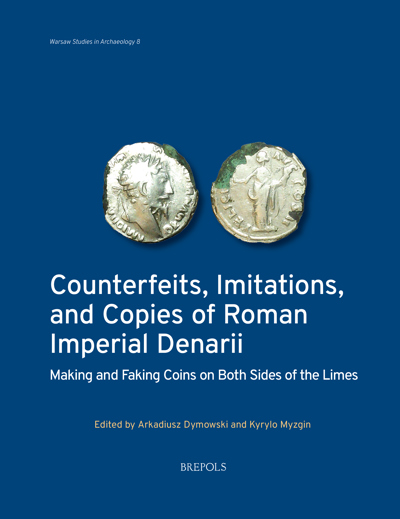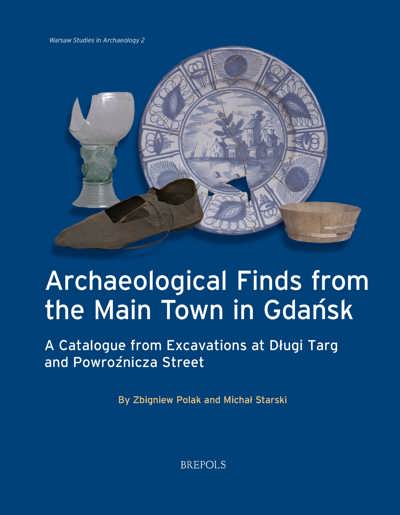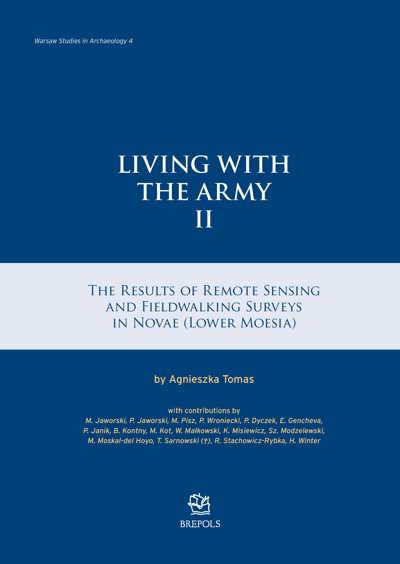
Counterfeits, Imitations, and Copies of Roman Imperial Denarii
Making and Faking Coins on Both Sides of the Limes
Arkadiusz Dymowski, Kyrylo Myzgin (eds)
- Pages: 222 p.
- Size:216 x 280 mm
- Illustrations:20 b/w, 75 col., 13 tables b/w., 4 maps b/w, 6 maps color
- Language(s):English
- Publication Year:2025
- € 80,00 EXCL. VAT RETAIL PRICE
- ISBN: 978-2-503-61244-7
- Hardback
- Available
- ISBN: 978-2-503-61245-4
- E-book
- Available
Arkadiusz Dymowski obtained his first Ph.D. in 2010 and habilitation in 2018 (in archaeology) from the University of Warsaw. His second Ph.D. (history, 2016) is from the University of Gdansk. Since 2012 he has participated in projects undertaken through the University of Warsaw
Kyrylo Myzgin obtained his Ph.D. from V.N. Karazin Kharkiv National University in 2010 and worked there in 2006-2015. Since 2015 he has been working as an adjunct at the University of Warsaw.
Roman Imperial denarii from the first–third centuries AD are, almost without exception, the most common ancient coinage to be found in Central, Northern, and Eastern Europe beyond the Roman limes. Perhaps surprisingly, however, a significant percentage of these coins are in fact counterfeit, comprised largely of denarii subaerati (plated denarii, fourrées) and denarii flati (base-metal cast copies). Moreover, these fake coins were not only manufactured by Romans themselves, but also by barbarian peoples in Eastern Europe, far from the Roman limes, in what should be considered a mass-scale phenomena.
This volume draws together archaeological, numismatic, and historical research in order to offer a new assessment of the production and use of counterfeit Roman Imperial denarii both within the European provinces of the Roman Empire and in European Barbaricum. Drawing on the results of the research project Barbarian Fakers. Manufacturing and Use of Counterfeit Roman Imperial Denarii in East-Central Europe in Antiquity, from the University of Warsaw, the papers gathered here explore the transfer of ideas, technology, and finished products that led to the transfer of counterfeit coinage across the Empire, and shed light on how, why, and when such coins were created and used.
List of Illustrations
List of Abbreviations
Introduction
Arkadiusz Dymowski and Kyrylo Myzgin
1. Counterfeit Coin Moulds from Britannia Inferior: A Summary and Brief Discussion
Richard Brickstock
2. The Production of Struck and Cast Denarii in Châteaubleau (France) during the Second Half of the Third Century AD
Fabien Pilon
3. Counterfeit Denarii North of Hadrian’s Wall: Roman or ‘Barbarian’?
Fraser Hunter
4. Non-official Roman Denarii in Thuringia: The Finds from the Germanic Settlement of Frienstedt
Mario Schlapke
5. The ONAV Group of Barbarian Imitations and Copies of Roman Imperial Coins: Manufacturing of denarii subaerati in Eastern Europe in Antiquity
Arkadiusz Dymowski
6. Finds of Counterfeit Roman Denarii at Selected Roman Period Settlement Sites in Western Lesser Poland: The State of Research and Prospects
Jarosław Bodzek, Szymon Jellonek, and Barbara Zając
7. Cast Copies of Roman Imperial Denarii from Belarus
Vital’ Sidarovich
8. Technological Variety of Methods Used in the Production of Cast Copies of Roman Denarii on the Territory of the Chernyakhiv Culture between the Middle Dniester and Southern Bug
Oleksandr Nadvirniak and Oleh Pohorilets
9. Elemental Composition of Cast Copies of Denarii and Related Production Waste from Ukraine Determined Using PIXE and XRF Methods
Oleksandr Buhay, Kyrylo Myzgin, Oleksandr Nadvirniak, and Oleh Pohorilets
10. Denarii flati
Kyrylo Myzgin
11. Cast Counterfeit Coins or pecunia flata? Ancient Latin Sources and the Term denarii flati
Bartosz Awianowicz




